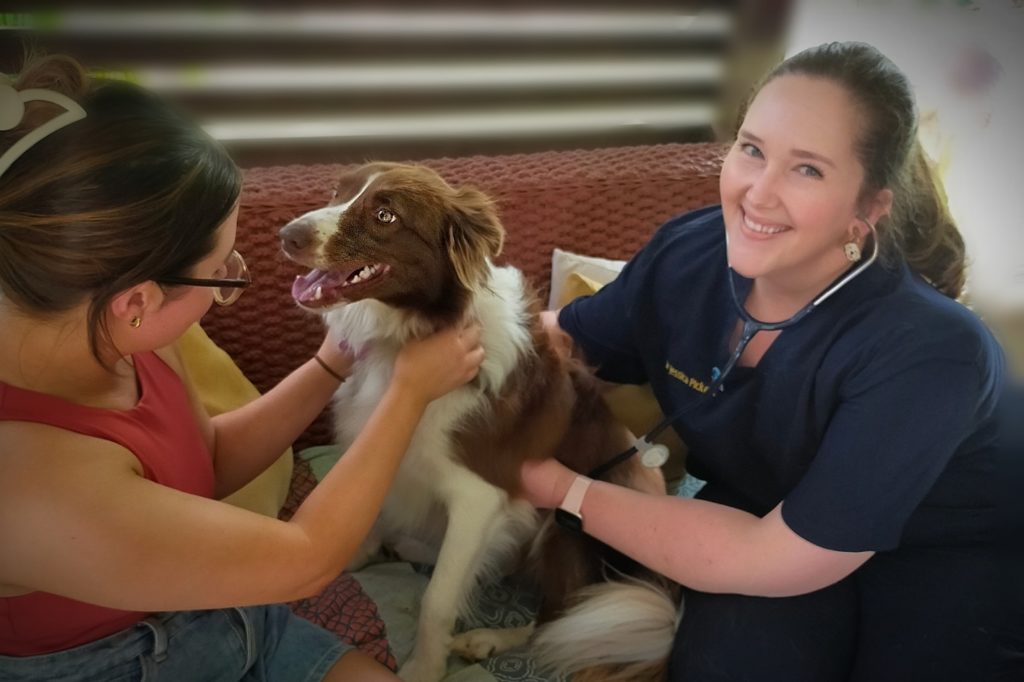
What can you expect during a Synergy Vet behavioural consultation? Compassion, knowledge, great communication and a passionate veterinarian who truly *sees* the whole picture.
For serious issues like severe fears, phobias, or aggressive behaviours that pose safety risks, a consultation with a behaviour vet can help you get quicker results and check if any medical conditions are contributing to your pet’s problems. Plus, if you need a trainer’s help, both you and the trainer will get guidance on the best way to proceed.
“…a behavioural consultation with a suitably qualified veterinarian helps you obtain results faster and determine if any medical conditions are contributing to your pet’s condition.”
How to prepare for a veterinary behaviour consultation
Document your concerns

You will be sent a link for a comprehensive behavioural questionnaire that must be completed at least 48 hours before the consultation. Please complete a separate entry for all involved animals in the household
Discuss your concerns with any other involved parties (family members, neighbours etc.) and include these concerns in the behavioural history questionnaire. The more detail, the better.
Reflect on how you would feel about your pet displaying these behaviours in all stages of their, and your, lives (i.e., when your pet is adult size; out in public; around babies/children; with a new pet; if you need to travel or change to longer hours away from home).
If possible and safe to do so, please film problematic behaviours. We will send you a private Dropbox folder link to upload images/ videos before the consultation. Never provoke the pet to get video footage; safety for family members and other animals must be the priority.
If the behaviours occur when you are away from home, investing in a security system that allows both audio and video recording can provide invaluable information. Most security systems allow you to save video snippets. If this is not practical, audio recordings of barking/vocalising behaviours can be helpful too (enlist neighbours to help).
Please take videos of any outdoor situations or locations where problematic behaviours are occurring (on walks, in the car etc.).
The more detailed and objective your information is, the more likely that the veterinarian can reach a diagnosis or tentative diagnosis of the problem and formulate an appropriate treatment plan.
Prepare your pet for the consultation
Unless your pet suffers from a medical condition, please withhold food for at least TWO HOURS (do not restrict water intake) before the in-home consultation and prepare some of your pet’s favourite food/treats in TINY (5mm) pieces. A hungry pet is more likely to focus and relax if there is food involved, and small treats allow rapid reward without filling their tummies up too quickly. Please advise us if your pet or anyone present at the in-home consultation has dietary allergies (i.e peanut anaphylaxis or reaction to rich treats).
If your dog experiences very fearful or aggressive behaviours when guests arrive or when visiting veterinary clinics, please let us know ASAP. We may be able to help make the visit more comfortable for your pet.
If your pet suffers from aggressive behaviour (growling, snapping, biting- regardless of whether a bite has occurred before), we recommend purchasing and fitting a muzzle for your pet before the appointment. We recommend a Baskerville Ultra muzzle (see here for more information). These comfortable muzzles allow your pet to pant, drink and take treats, but reduces their ability to bite. This helps you, and your pet, relax, and may allow the veterinarian to perform a more thorough assessment of your pet. Please let us know if you would like more information about muzzles and muzzle desensitisation (helping your pet enjoy wearing a muzzle).
Location: House call
The vet will usually call or message at least 15 minutes before the visit to allow you time to prepare.
If your pet displays fear or any signs of aggression when there are new people/ changes in the home, please confine your pet at least 10mins prior to the vet’s arrival up in a small, quiet, darkened enclosed room where they cannot escape (i.e. cats are often best confined in bathrooms) with background music and a special treat like natural peanut butter in a KONG or licky mat (not too much food though- we want them hungry for rewards later).

If they are fearful when away from their guardian, please organise a familiar person to sit with them in this room while the consultation is occurring. This can help minimise their anxiety when the vet arrives and during the initial history-gathering portion of the consultation. Please have a harness and lead in the room with them for easy application and introduction.
The booking deposit and cancellation policy
Due to the high demand and significant time required for a behavioural consultation, a non-refundable $150 booking deposit per consultation must be received to secure your appointment time. This deposit can be used towards the behavioural consultation. This can be paid via direct deposit or a secure online payment platform.
We require TWO BUSINESS DAYS* notice of cancellations or rescheduling of behaviour appointments. Please call 0493 520 393 or email synergyvetbehaviour@outlook.com to inform us of any cancellations. Failure to do so will incur a $150 cancellation fee.
*Exceptions may be granted in extenuating circumstances and is at the discretion of SVBS.
What happens during the behaviour consultation?
Part 1: The telehealth appointment
Due to the complex and in-depth nature of veterinary behaviour, an initial telephone or virtual consultation helps us to understand you and your pet’s concerns and provide some initial safety information.
Many clients find the information provided in the consultation to be an awakening of sorts, and this can be quite mentally draining. We find that pet guardians can retain this new information better if we split the inital consultation into both a telehealth and an in-home visit.
Using the telehealth approach, we can assess the medical and behavioural history, clarify your biggest concerns and agree on goals for the in-person session. It also allows both the family and the veterinarian to best prepare for the in-home session.
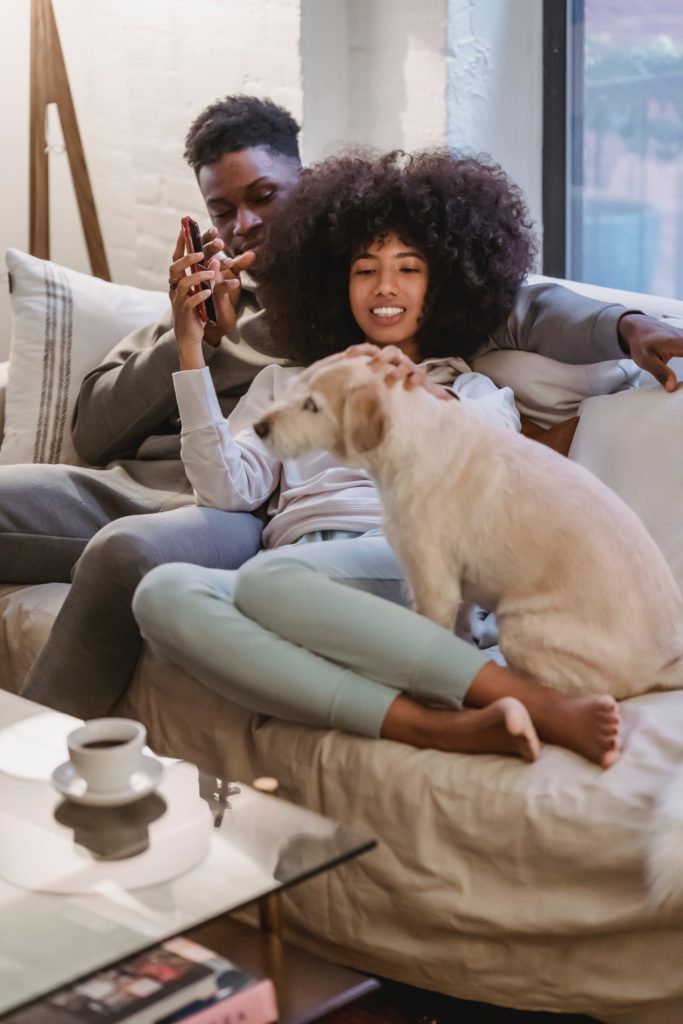

Part 2: The in-home consultation
During the behavioural consultation, the veterinarian will perform a comprehensive physical, behavioural and neurological examination (where possible, depending on your pet’s comfort). The veterinarian will ask you more specific questions about the concerning behaviour and recommend any further diagnostics that may be needed to rule out underlying medical conditions.
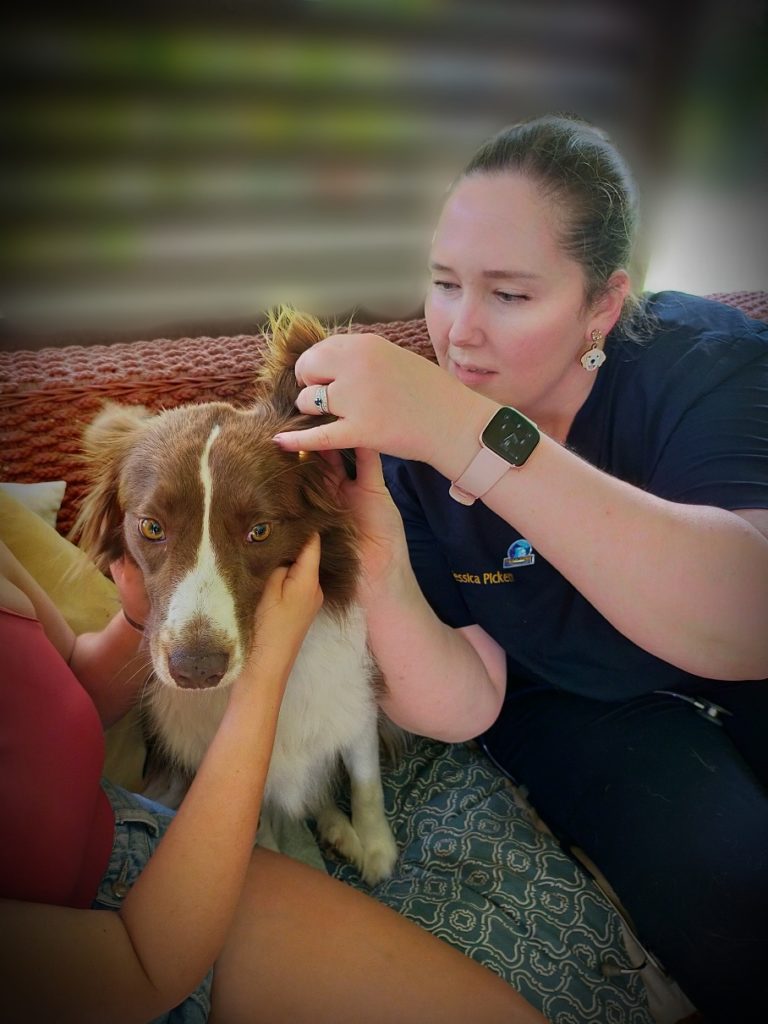

“Behaviour veterinarians are trained to observe the behaviour and body language of animals, combined with an extensive knowledge of hidden disease, to determine whether the animal’s reactions to a situation are normal/ appropriate, or a cry for help.”
In most cases, behavioural strategies and/or medications (if needed) will be discussed and modelled, with a detailed behavioural plan and supporting training documents provided and explained at the initial in-home visit.
Who should be at the consultation?
Ideally, all members of the family should be present during the in-home consultation. In this way, each member can tell the veterinarian what he or she has observed, and all the family members can participate in the discussion.
For dogs, if you are working with a trainer, check with the veterinarian to see if it might also be advisable to invite the trainer to the consultation, because some trainers may use techniques that are consistent with what you want to accomplish, and others may be counterproductive.
Do I bring my pet to the consultation?
It is important for the veterinarian to observe the pet, as well as determine what sort of relationship there is between the pet and each family member.
The veterinarian will observe the general demeanour of the pet, as well as the pet’s response to specific situations. Other pets within the home may also have an impact on the expression of problem behaviours and, if they can safely be introduced in the consultation, they may need to be included. If you are concerned for your, or other people’s safety by having your pet around strangers in the home, please let us know.
The pet’s behaviour when the veterinarian is present may not be representative of their normal behaviour. Therefore, it is important for you to let the veterinarian know whether your pet’s reaction is different and we strongly recommend the use of video to help the veterinarian understand the pet’s reactions (as discussed in the “document your concerns” section)
What does treatment usually involve?
In all cases, some sort of behaviour modification program will be recommended.
- If your pet does not have basic obedience training, we will sometimes need to introduce this.
- Then, depending on the situation, the veterinarian will teach you how to modify your pet’s behaviour by means of techniques such as desensitisation, counterconditioning, response modification, shaping, or other appropriate means.
- We use praise and rewards to shape behaviours. Science has shown that these strategies are more effective, more ethical and safer for both humans and animals. We do not shame guardians or use the application of force to coerce pets.
- Various management techniques may be used to avoid the triggers for problem behaviours and to keep people and other animals safe.
- In some cases, drug therapy to treat contributing disease (i.e., pain or infection) or to help your pet be calm enough to learn new healthy behaviours may be necessary.
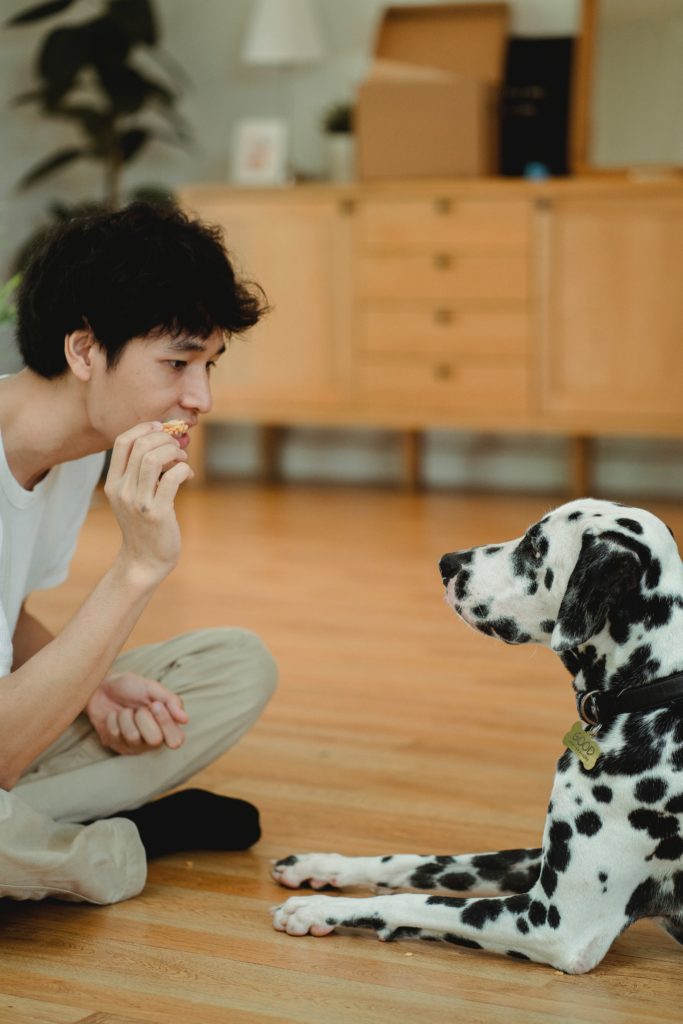
What ongoing care is usually recommended for my pet?
It is important to know that few behavioural problems are truly cured, and responsible management is a factor for every patient. The duration of behavioural treatment and prognosis varies from patient to patient. This is a product of not only the pet’s history of mental illness, but also the physical and social environment, consistency of interactions and any coexisting medical conditions.
Some minor and relatively recent behavioural conditions (like some medical conditions) may be managed with just a few visits. Understandably long-standing, complex, multiple behavioural conditions (for example, progression of separation anxiety to noise phobia, to fear aggression, complicated by pain aggression from osteoarthritis) may require more frequent or longer-term assistance from your veterinarian.
Although animals are not humans, they have emotional needs and take time to adjust to new patterns of thinking. Their human guardians also need time to learn to read their pet’s body language and practice ways to respond.
See our behavioural care packages to help fast-track you and your pet’s progress
“If we cannot expect a human that can talk and reason with us to be “cured” by a psychiatrist in a few visits, we certainly cannot expect the same of an animal and their guardian”.
Why not just send my pet away for “training”?
You and your family are the key to modifying and managing the behaviour and reactions of your pet. In many cases, the environment plays a role in the development and maintenance of problem behaviours.
Training in another environment may not have much effect on the behaviour in your home. Having a trainer or another person teach the dog how to behave does not ensure that you will have the necessary control over the pet once it returns to your home environment.
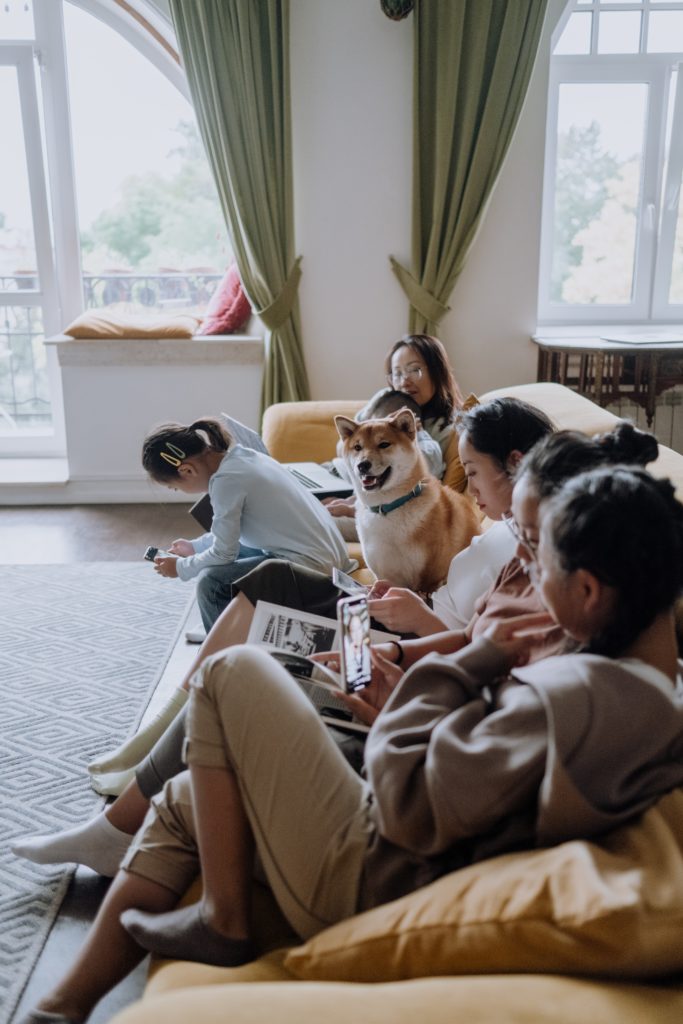
It is important not only to modify the pet’s behaviour, but also to teach all the family members how to maintain this training properly and prevent any new issues that may arise in future.
“By seeking help from a behaviour veterinarian, your family will all become part of the solution for helping your pet be a happy and healthy member of the family”.
